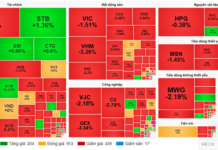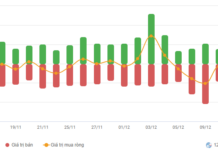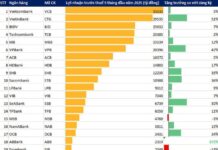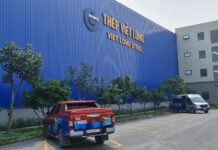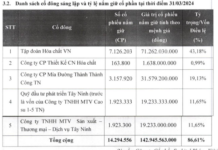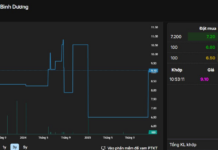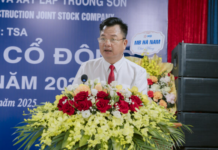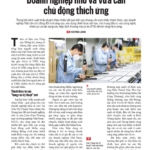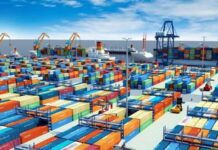Recently, in Ba Ria-Vung Tau province, Prime Minister Pham Minh Chinh, Chairman of the Southeast Region Coordination Council, chaired the Council’s 5th meeting, themed: “Double-digit” economic growth of the Southeast region in 2025: “Challenges, Opportunities, and Solutions.”
At the conference, the Prime Minister directed the Ministry of Industry and Trade and the People’s Committee of Ba Ria-Vung Tau province to coordinate and promote the implementation of the project to build a free trade area in the province.
Why has Ba Ria-Vung Tau proposed the formation of a free trade area?
Ba Ria-Vung Tau Proposes the Formation of a Free Trade Area
Earlier, Mr. Pham Viet Thanh, Secretary of the Provincial Party Committee of Ba Ria-Vung Tau, delivered a prominent speech at the plenary session of the Vietnam Logistics Forum 2024, emphasizing the importance of developing a free trade area combined with a seaport in Cai Mep Ha, Ba Ria-Vung Tau province.
Mr. Thanh considered this a crucial strategic move to complete the logistics infrastructure in the Southeast region. Specifically, constructing the Free Trade Area associated with the Cai Mep Ha seaport will be synchronized with the Long Thanh International Airport and the Cai Mep- Thi Vai deep-water seaport, creating an extremely strong competitive advantage for the region and the country.

Mr. Pham Viet Thanh, Secretary of the Provincial Party Committee of Ba Ria-Vung Tau, speaks at the Vietnam Logistics Forum 2024. Photo: Thanh Tra Newspaper
According to the Secretary of the Provincial Party Committee of Ba Ria-Vung Tau, the province enjoys a strategic location as the gateway to the East Sea of the Southeast region and the country. Blessed with a favorable natural environment and a gentle and hospitable people, the province achieved a GRDP growth rate of 11.47% in the first nine months of 2024, the highest in the past decade and the fourth highest in the country.
In recent years, with special attention from the Central Government, Ba Ria-Vung Tau province has received significant investment, particularly in the transportation system of the Southeast region and inter-regional connectivity.
Along with the development of the Long Thanh International Airport and the modernization plan for the Cai Mep- Thi Vai seaport, the goal of upgrading this port into a leading international transshipment center in the region and the world is gradually becoming a reality. The “green port, green logistics” model will promote international integration and sustainable development.
Additionally, the early formation of the free trade area associated with the Cai Mep Ha seaport is genuinely necessary, as stated in Resolution No. 24-NQ/TW dated October 7, 2022, of the Politburo on socio-economic development and ensuring national defense and security in the Southeast region by 2030, with a vision towards 2045.
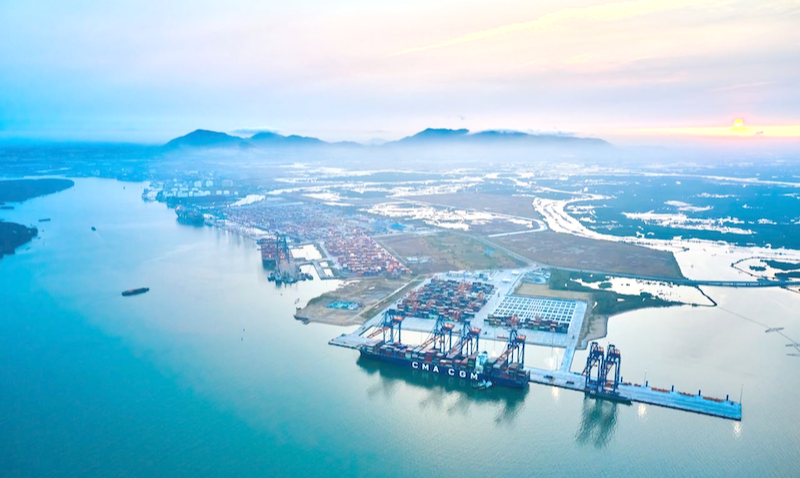
Master Plan for the Development of Vietnam’s Seaport System for the period of 2021-2030, with a vision towards 2050. The Cai Mep Ha terminal project is among the prioritized seaport projects for investment until 2030 as per the Government’s decision. Photo: Enterprise Forum
According to Mr. Nguyen Canh Tinh, General Director of the Vietnam Maritime Corporation, as reported in Nhan Dan newspaper, Ba Ria-Vung Tau province boasts a 300-kilometer-long coastline and a multi-modal transportation infrastructure system that is being invested in and modernized.
Therefore, developing the Cai Mep Ha free trade area in conjunction with the East-West industrial-urban corridor will bring numerous benefits not only to the region’s economy but also to the country.
Mr. Tinh affirmed that the establishment of the Cai Mep Ha free trade area would facilitate Vietnam’s rapid and efficient access to goods from other countries. Additionally, this free trade area will open opportunities for Vietnam to export high-value-added products to large markets such as Europe and North America.
This will be one of the critical factors in Vietnam’s development of a digital economy and enhancing the country’s competitiveness in the international market.
The Free Trade Area Model: A Novelty in Vietnam
Also, at the Vietnam Logistics Forum 2024, Mr. Nguyen Anh Son, Director of the Import-Export Department, Ministry of Industry and Trade, shared that, in today’s globalized economic context, free trade areas have proven to be an effective model in promoting import-export activities and developing the logistics industry.
According to Mr. Son, free trade areas offer a liberal mechanism, enabling businesses to take advantage of tax exemptions, reductions, and simplified administrative procedures.
This holds particular significance for Vietnam, an economy heavily reliant on exports and expanding trade relations through free trade agreements (FTAs) with important partners, Mr. Son emphasized.
The Director of the Import-Export Department affirmed that the benefits of free trade areas for economic development have been demonstrated in many countries. However, to date, Vietnam has not officially established any free trade areas.
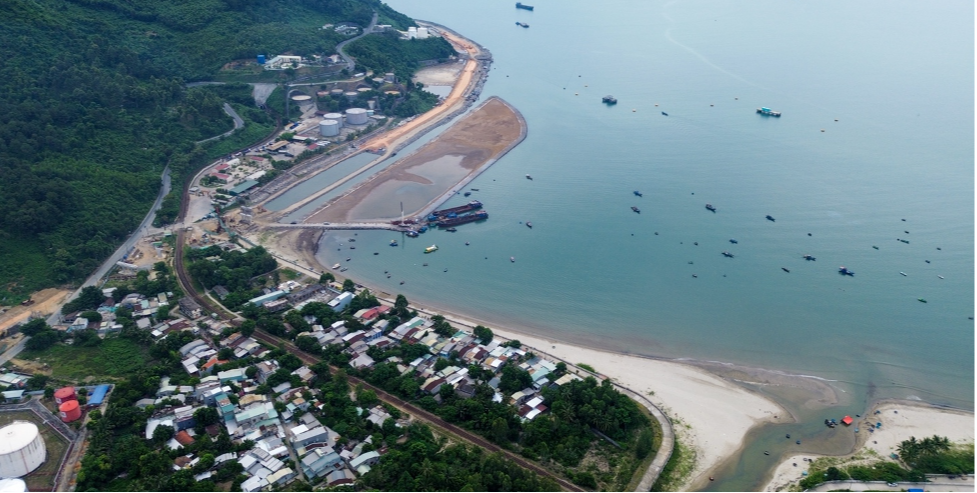
The National Assembly agreed to establish the Da Nang Free Trade Area associated with the Lien Chieu seaport, aiming to attract high-quality investment, finance, trade, tourism, and services. Photo: VTV Times
Currently, apart from the free trade area model in Da Nang, which has been approved by the National Assembly for implementation on a pilot basis, there is no precedent for this model in Vietnam. Therefore, the law has not yet specifically regulated the process, procedures, decision-making authority for investment and establishment, management model, mechanism of operation, and decentralization to be uniformly applied nationwide.
It is known that Da Nang city is currently collecting opinions from experts and business representatives on development plans for the Da Nang Free Trade Area (DFTA) – the first model of its kind to be permitted for pilot establishment in Vietnam – before submitting the project to the Ministry of Planning and Investment by the end of this year.
Da Nang plans to build a dispersed free trade area with nine main locations, designed as functional areas, including production, logistics, and commercial-service zones, spanning over 1,700 hectares.

Da Nang City. Photo: Investment Newspaper
By 2030, the development target is for the free trade area to directly contribute 1-2% to Da Nang’s GRDP and attract about 21,000 workers. By 2040, the contribution is expected to increase to 9.5% of GRDP and provide jobs for 90,000 laborers. And by 2050, the area is projected to account for 17.9% of GRDP and employ 127,000 people.
The project will focus on developing four priority industries: logistics, production, commerce, and services, along with innovation. The free trade area is expected to become a high-quality multi-modal transport, auxiliary services, and warehousing center.
The Singaporean Real Estate Titan: A $4 Billion Investment Story in Vietnam’s Metropolitans
The Saigon Centre, a prominent mixed-use development project, stands as one of this Singaporean giant’s most remarkable endeavors.
“The International ‘Playbook’: Small and Medium-Sized Enterprises Need to Take the Initiative to Adapt”
In the context of exports recording many positive results but still facing challenges, Vietnamese businesses need to be proactive in innovation, build long-term strategies, and focus on investing in technology and people. They must also take advantage of free trade agreements (FTAs) to expand their markets and stay competitive in the global economy.


